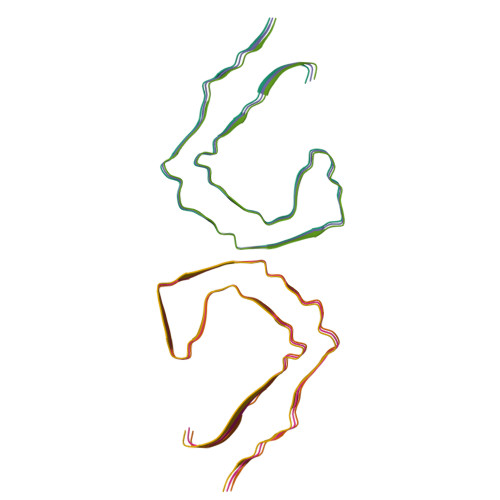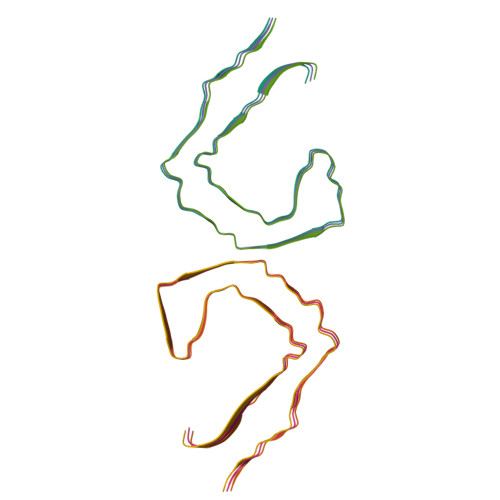Alzheimer's disease seeded tau forms paired helical filaments yet lacks seeding potential.
Duan, P., Dregni, A.J., Xu, H., Changolkar, L., Lee, V.M., Lee, E.B., Hong, M.(2024) J Biol Chem 300: 107730-107730
- PubMed: 39214304
- DOI: https://doi.org/10.1016/j.jbc.2024.107730
- Primary Citation of Related Structures:
9CGX, 9CGZ - PubMed Abstract:
Alzheimer's disease (AD) and many other neurodegenerative diseases are characterized by pathological aggregation of the protein tau. These tau aggregates spread in a stereotypical spatiotemporal pattern in the brain of each disease, suggesting that the misfolded tau can recruit soluble monomers to adopt the same pathological structure. To investigate whether recruited tau indeed adopts the same structure and properties as the original seed, here we template recombinant full-length 0N3R tau, 0N4R tau, and an equimolar mixture of the two using sarkosyl-insoluble tau extracted from AD brain and determine the structures of the resulting fibrils using cryoelectron microscopy. We show that these cell-free amplified tau fibrils adopt the identical molecular structure as the AD paired-helical filament (PHF) but are unable to template additional monomers. Therefore, the PHF structure alone is insufficient for defining the pathological properties of AD tau, and other biochemical components such as tau posttranslational modifications, other proteins, polyanionic cofactors, and salt are required for the prion-like serial propagation of tauopathies.
Organizational Affiliation:
Department of Chemistry, Massachusetts Institute of Technology, 170 Albany Street, Cambridge, MA 02139.
















